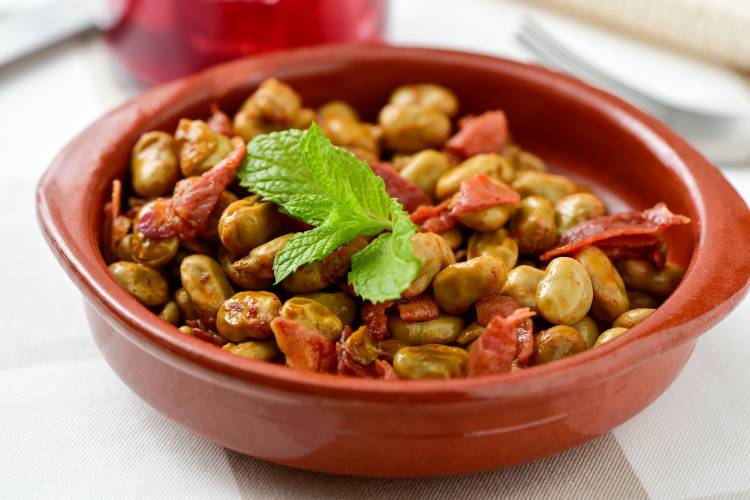Properties of broad beans: benefits that you didn’t know about
The properties of broad beans are very diverse and not all people know about them. Now that their season is starting, we tell you everything about this legume.
fresh food
Share

Perhaps they are one of the least well-known legumes, but they have many benefits. We are referring to broad beans which, in reality, also share many features with vegetables, for which reason they are considered to be halfway between them and legumes. Similar to chickpeas, beans or lentils, the properties of broad beans are many and they contain many nutrients, which makes them an essential in any pantry.
Cultivated by human beings for millennia, the broad bean is a very healthy crop and it is perfect for including in any daily meal plan. As far as their physical attributes are concerned, they can be recognised by their oval appearance and green colour. Their flesh is soft and tasty, and it goes well with many other foods, which makes them an excellent side dish. But let’s talk in more detail, firstly about the properties of broad beans and why you should include them in your shopping basket.
Properties of broad beans
The properties of broad beans are many. They are thought to be antioxidant, contribute to preserving the sight and eye health, and they support the immune system. They contain essential elements for the formation of blood cells, and they are good for the nervous system. They also help to maintain correct muscle function, they help with the bones and teeth, and they improve intestinal health.
Benefits of broad bean
If you are asking yourself what the benefits of broad beans are, we provide these below. Firstly, they contain iron, a nutrient that is essential for the immune system and for transporting oxygen in the blood. Additionally, their high folic acid and potassium content helps to maintain a healthy nervous system.
What vitamins do broad beans contain? One example is vitamin B9, which makes them particularly interesting during pregnancy and breastfeeding. If that wasn’t enough, broad beans are also rich in phosphorus and potassium, protein and fibre. No more no less!
You can also find different types of broad beans. Dried broad beans have very interesting properties (we have already seen this: fibre, vitamins, minerals…), although they need to be soaked and hydrated before cooking, in the same way as the rest of the harder legumes. Fried broad beans have similar properties, but like everything that is cooked in a frying pan with oil, they are a less healthy choice.

Recipes with broad beans
And here is the question that you are sure to be asking yourself: which recipes with broad beans can I put into practice? Well, broad beans are good in stews and potages, they can be prepared with ham (a real classic), as a side dish for meat or fish, but also in salads, omelettes or scrambled eggs.
As you can see: you don’t have a single excuse for not starting to eat broad beans.






